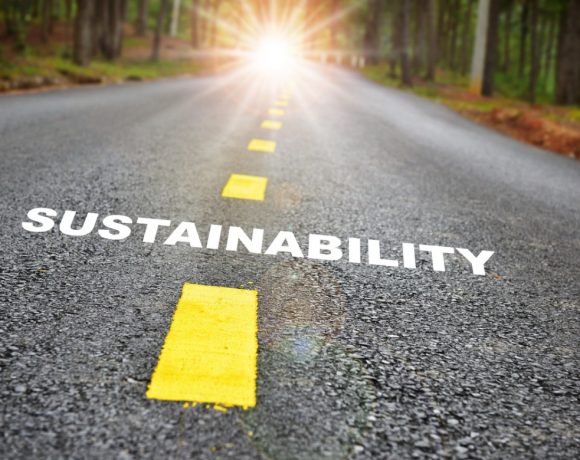- In Asia, economic growth comes at a high carbon cost. CFOs have a critical role to play in making companies accountable for sustainability issues.
- Paying close attention to changing regulation, adopting new ESG metrics, understanding the benefits of ESG-linked instruments, and anticipating customers’ expectations on sustainability will help CFOs provide leadership as businesses shift towards a sustainable future.
The Asia Pacific, an economic powerhouse, produces about half the world’s carbon dioxide. The heavily populated region will need to step up its efforts to reduce emissions if the world is to prevent dangerous levels of global warming.
Chief Financial Officers have a critical role to play. By integrating material, environmental, social and governance data into strategy, operations, and disclosure, CFOs can improve their management of risks and seize new business opportunities.
However, many CFOs are finding themselves out of their depth as pressure mounts for credibility in corporate sustainability. They have traditionally looked after the numbers while other departments dealt with what were once seen as reputational issues. But those divisions are fading as evidence builds that sustainability directly influences financial performance.
Here are the six reasons why Asian CFOs need to expand their focus.
1. Shifting regulatory environment
Governments around the world are stepping up pressure to reduce carbon emissions and require greater corporate climate risk management and disclosure.
This shift is taking place in the wake of the US re-joining the Paris Agreement and the adoption of the European Green Deal, as well as countries such as China, South Korea and Japan making pledges to become carbon neutral.
The EU Sustainable Finance Disclosure Regulation (SFDR) introduces various disclosure-related requirements for financial market participants and financial advisors across the entity, service and product levels.
In Southeast Asia, Singapore aims to become a sustainable finance hub in the next decade. The Monetary Authority of Singapore’s Green Finance Action Plan was introduced in 2019 to strengthen the financial sector’s resilience to environmental risks, develop green financial solutions, and leverage innovation and technology.
2. New metrics for ESG reporting
Frameworks such as the International Financial Reporting Standards (IFRS) or the Task Force on Climate-related Financial Disclosures (TCFD) are working to provide standardised accounting principles through which companies can disclose their climate performance.
Furthermore, five leading standard-setters are working together through the World Economic Forum to establish metrics to report all material climate impacts under the umbrella concept of ESG.
In Singapore, a financial industry taskforce launched a guide for climate-related disclosures. In Hong Kong, financial institutions and listed companies will have to disclose the financial impact of climate change on their businesses by 2025.
3. ESG portfolios are growing
Money invested in ESG funds, which apply environmental, social and governance principles, more than doubled last year. Sustainable investing is gaining ground in the Asia Pacific as well. The CFO’s role is to satisfy investor appetite for ESG reporting. CFOs communicate their company’s progress on ESG indicators to asset managers and pension funds.
This may mean partnering with the Chief Sustainability Officer to understand the ramifications for investor relations fully, said Daniel Rüfenacht, former Group Vice President of Corporate Communications and Sustainability at SGS, an inspection, verification, testing and certification company.
“It’s getting very complicated,” explained Rüfenac at an IMD Discovery event. “Every investor is coming from a different angle and gets very specific.”
4. ESG-linked financing goes mainstream
CFOs are realising that debt financing tied to ESG performance often results in preferential conditions. Sustainability-linked bonds allow companies to raise capital while promising investors that they will earn more if companies do not meet their sustainability targets.
The market for SLBs could grow 20-fold this year to as much as $150 billion, according to JP Morgan. The issuance of green bonds, which are linked to specific climate-related projects, could reach as much as $450 billion this year compared to almost $270 billion last year.
Asia’s issuance of bonds tied to ESG factors doubled to reach a record $69 billion this year. In May, Singapore announced plans to accelerate green finance by issuing green bonds worth up to S$19 billion ($14.36 billion) to pay for public sector infrastructure projects.
In the same month, Malaysia’s largest bank, Maybank, revealed an ambitious plan to mobilize RM50 billion ($12 billion) in sustainable financing by 2025 while partnering with stakeholders to transition to a low-carbon economy.
5. Calculating the social cost of greenhouse gases
The US administration under President Joe Biden has revived a specific tool — the “social cost of greenhouse gases” — into the decision-making progress of the US federal government. The metric estimates, in dollars, the long-term damage done by one ton of greenhouse gas emissions. This estimate will affect international carbon markets and serve as a benchmark for internal carbon pricing schemes globally.
CFOs must factor in rising carbon costs in their evaluation of net present values or internal rates of returns for the evaluation of new investments, according to IMD Professor of Finance Karl Schmedders. “Internal carbon prices will have dramatic effects on the cost-effectiveness of many companies’ supply chains,” he said. “We will see a strong push towards local sourcing in the coming years.”
6. Corporate strategy and sustainability are merging
Corporate strategies are incorporating sustainable practices, including new business models with products and services that contribute to a more regenerative and circular economy. CFOs will be tasked with assessing the impact and communicating the return on investment of these strategies. The active engagement of the CFO is needed to demonstrate a robust business case for sustainable innovation.
Ultimately, paying close attention to changing regulation, adopting new ESG metrics, understanding the benefits of ESG-linked instruments, and anticipating customers’ expectations on sustainability will help CFOs provide leadership as businesses shift towards a sustainable future.






NO COMMENT